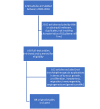C6 cell line: the gold standard in glioma research
- PMID: 31641331
- PMCID: PMC6801124
C6 cell line: the gold standard in glioma research
Abstract
Background: Glioblastoma multiforme is the most aggressive brain tumor with poor prognosis and an average survival of 1-2 years. Animal models that simulate the features of human glioma are the key to newer agents or therapeutic strategies. In order to establish such models, the C6 glioma cell line has been mostly used in neuro-oncology research.
Methods: In this narrative review, we systematically reviewed the international literature in order to retrieve and present the most important biological and molecular features of C6 cell line.
Results: Even though many cell lines have been developed, each cell line presents with slight differences from human glioma behavior. C6 cancer cell line is a rat glioma cell line, which can simulate in overall the high growth rate, the high vascularization, and the highly infiltrative character of glioblastoma multiforme.
Conclusions: Most of the C6 glioma research has been focused on testing a wide diversity of agents for their tumoricidal activity. C6 cell line is considered to be a safe and popular glioma model in the literature, providing a good simulation of glioblastoma multiforme. HIPPOKRATIA 2018, 22(3): 105-112.
Keywords: C6; cell line; glioblastoma multiforme; glioma; rat glioma model.
Copyright 2018, Hippokratio General Hospital of Thessaloniki.
Conflict of interest statement
Authors declare no conflicts of interest.
Figures
Similar articles
-
The effects of tibolone on the human primary glioblastoma multiforme cell culture and the rat C6 glioma model.Neurol Res. 2009 Nov;31(9):923-7. doi: 10.1179/174313209X383268. Epub 2009 Jun 15. Neurol Res. 2009. PMID: 19531283
-
In vivo C6 glioma models: an update and a guide toward a more effective preclinical evaluation of potential anti-glioblastoma drugs.Rev Neurosci. 2023 Sep 1;35(2):183-195. doi: 10.1515/revneuro-2023-0067. Print 2024 Feb 26. Rev Neurosci. 2023. PMID: 37651618 Review.
-
Functional Role of Matrix gla Protein in Glioma Cell Migration.Mol Neurobiol. 2018 Jun;55(6):4624-4636. doi: 10.1007/s12035-017-0677-1. Epub 2017 Jul 13. Mol Neurobiol. 2018. PMID: 28707070
-
A comparative study of ectonucleotidase and P2 receptor mRNA profiles in C6 cell line cultures and C6 ex vivo glioma model.Cell Tissue Res. 2009 Feb;335(2):331-40. doi: 10.1007/s00441-008-0723-4. Epub 2008 Nov 21. Cell Tissue Res. 2009. PMID: 19023597
-
Rat C6 glioma as experimental model system for the study of glioblastoma growth and invasion.Cell Tissue Res. 2002 Dec;310(3):257-70. doi: 10.1007/s00441-002-0651-7. Epub 2002 Nov 6. Cell Tissue Res. 2002. PMID: 12457224 Review.
Cited by
-
Suppression of PI3K/Akt/mTOR pathway in chrysoeriol-induced apoptosis of rat C6 glioma cells.In Vitro Cell Dev Biol Anim. 2022 Jan;58(1):29-36. doi: 10.1007/s11626-021-00634-x. Epub 2021 Dec 14. In Vitro Cell Dev Biol Anim. 2022. PMID: 34907494
-
A combination of metformin and epigallocatechin gallate potentiates glioma chemotherapy in vivo.Front Pharmacol. 2023 Mar 21;14:1096614. doi: 10.3389/fphar.2023.1096614. eCollection 2023. Front Pharmacol. 2023. PMID: 37025487 Free PMC article.
-
Radiosensitization of Allogenic Subcutaneous C6 Glioma Model with Focused Ultrasound-Induced Mild Hyperthermia.Life (Basel). 2024 Mar 9;14(3):359. doi: 10.3390/life14030359. Life (Basel). 2024. PMID: 38541684 Free PMC article.
-
Microglial TLR9: Plausible Novel Target for Therapeutic Regime Against Glioblastoma Multiforme.Cell Mol Neurobiol. 2021 Oct;41(7):1391-1393. doi: 10.1007/s10571-020-00925-z. Epub 2020 Jul 20. Cell Mol Neurobiol. 2021. PMID: 32691190 Free PMC article. Review.
-
A multiparametric perspective on C6 and F98 cell lines in orthotopic rat models for glioblastoma research.Sci Rep. 2025 Jul 2;15(1):22547. doi: 10.1038/s41598-025-06684-5. Sci Rep. 2025. PMID: 40596200 Free PMC article.
References
-
- Louis DN, Perry A, Reifenberger G, von Deimling A, Figarella-Branger D, Cavenee WK, et al. The 2016 World Health Organization Classification of Tumors of the Central Nervous System: a summary. Acta Neuropathol. 2016;131:803–820. - PubMed
-
- Wen PY, Kesari S. Malignant gliomas in adults. N Engl J Med. 2008;359:492–507. - PubMed
-
- Furnari FB, Fenton T, Bachoo RM, Mukasa A, Stommel JM, Stegh A, et al. Malignant astrocytic glioma: genetics, biology, and paths to treatment. Genes Dev. 2007;21:2683–2710. - PubMed
-
- Benda P, Lightbody J, Sato G, Levine L, Sweet W. Differentiated rat glial cell strain in tissue culture. Science. 1968;161:370–371. - PubMed
Publication types
LinkOut - more resources
Full Text Sources
Other Literature Sources

